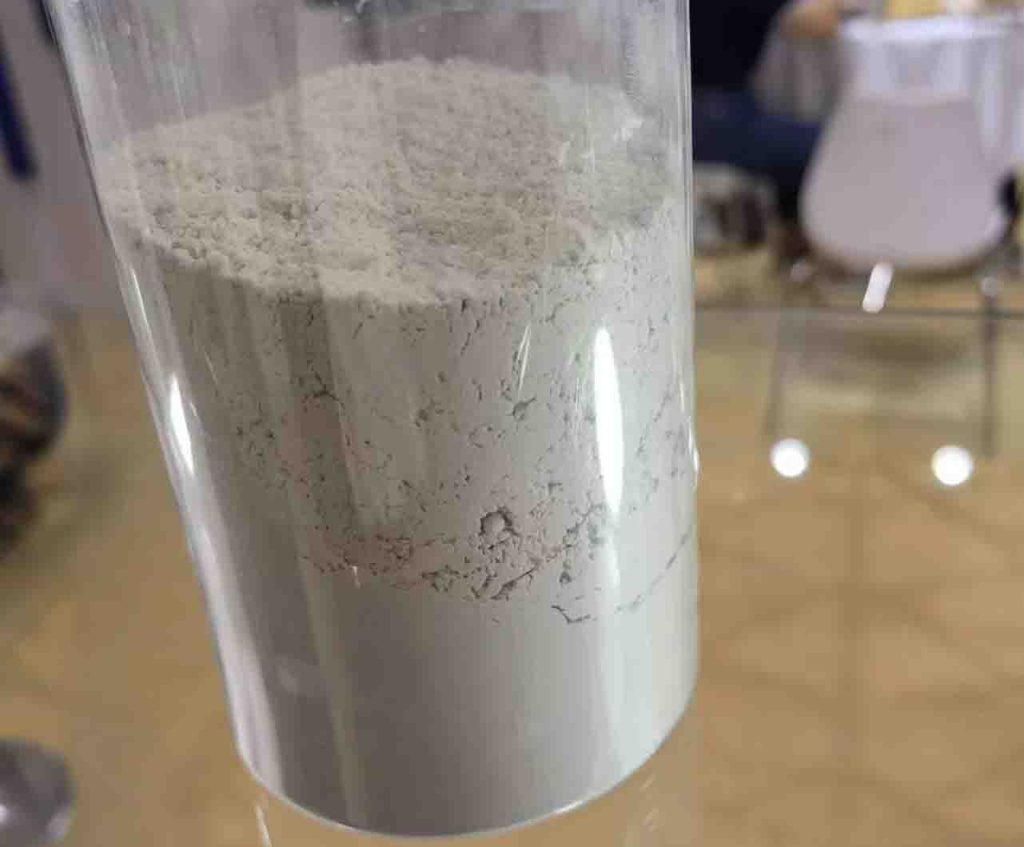Organska glina
Što je organska glina?
Jedna od karakteristika koja izdvaja organske materijale od anorganskih je prisutnost molekula koje se temelje na ugljiku, kao što su oni koji se mogu otkriti u mineralima gline. Ovi minerali uglavnom se sastoje od glinice, silicijev dioksid, i vodu, a nastaju kada stijene prolaze kroz procese trošenja i erozije.
Glina se sastoji od minerala; Štoviše, uključivanje organske tvari ima potencijal promijeniti i njegov sastav i sposobnosti koje ima. Glina se često smatra organskom tvari, unatoč činjenici da njegovi sastavni minerali čine većinu sastava..
Kako nastaje glina?
Glina je prirodni materijal koji nastaje kao rezultat trošenja i erozije stijena. Jedna uobičajena mineralna skupina koja stvara glinu je smektit. Bentonitne i montmorilonitne gline su najčešće gline iz skupine smektita.
Minerali gline sastoje se od slojeva atoma silicija i kisika, koji su zatim isprekidani atomima aluminija ili magnezija u pravilnim intervalima. Glina dobiva svoje jedinstvene karakteristike slojevitošću i organizacijom ovih ploča, koji se mogu odvijati na različite načine. Glina je fantastičan upijač koji ima sposobnost zadržavanja vode kao i drugih tekućina..
Kada bentonit i montmorilonit prolaze kroz organofilni proces, ovaj proces ili obrada stvara organogline. Ovaj tretman povećao je vodoodbojnost, poboljšana snaga, te sposobnost uklanjanja zagađivača iz vode i tla.
Hidrofobno vezivanje na glina-organskim kompleksima
Postupak stvaranja hidrofobnih površina glinenih minerala, ili vodoodbojna. Mijenja se vezivanjem organskih molekula koje imaju hidrofobna svojstva. To se naziva hidrofobnim vezanjem na glina-organskim kompleksima. Ovaj proces modificira površine glinenih minerala tako da su vodoodbojne.
minerali su prirodni slojeviti silikati koji nose neto negativni naboj na površinama svojih slojevitih struktura. Ove površine su hidrofilne. To znači da ih voda jako privlači. Kao rezultat, uvlače i zadržavaju molekule vode.
Obradom minerala gline određenim organskim molekulama, može se promijeniti površinska svojstva glinenih minerala. Organske molekule koje uključuju hidrofobne funkcionalne skupine, poput produženih lanaca ugljikovodika. Oni ne mogu dobro komunicirati s vodom i radije to čine s nepolarnim tvarima. Minerali gline i organske molekule mogu reagirati na više različitih načina, uključujući adsorpciju i stvaranje kovalentnih veza. Kompleksi organske gline su ono što nastaje kao nusprodukt ovog procesa. Ovi kompleksi sastoje se od organskih molekula koje su pričvršćene na površinu minerala gline.
Kao izravan rezultat ove transformacije, površine kompleksa organske gline postaju hidrofobne. Drugim riječima rečeno, izbjegavaju vodu i imaju slabu privrženost prema njoj. Površinska kemija minerala gline može biti promijenjena vezanjem hidrofobnih organskih molekula, što dovodi do stvaranja hidrofobne prevlake koja sprječava izravan kontakt površine gline s vodom.
Organske sorte gline
Svaka vrsta minerala organske gline ima različite karakteristike, što ih čini prikladnima za posebne primjene na temelju njihovog kapaciteta kationske izmjene, ponašanje oticanja, veličina čestice, i drugi faktori.
Kaolinit
Uglavnom nastaje trošenjem silikatnih minerala bogatih aluminijem poput glinenca. Kaolinit se ističe svojom pločastom strukturom i slabom sposobnošću izmjene kationa. Ima malu veličinu čestica i često je bijele ili blijede boje.
montmorilonit
Oblik minerala gline koji pripada skupini minerala smektita. Ime je dobio po francuskom gradu u kojem je pronađen. Montmorilonit se sastoji od naslaganih slojeva glinice i silicijevog dioksida između kojih se nalaze molekule vode i izmjenjivi kationi. Ovaj mineral gline ima visoku sposobnost kationske izmjene, što mu omogućuje laku apsorpciju i izmjenu iona. Montmorilonit se široko koristi u isplakama za bušenje, boja od organske gline, i premazi.
Smektit
Najčešće i najpoznatije smektite gline su montmorilonit i bentonit. Minerali smektita, poput montmorilonita, imaju slojevitu strukturu koja se sastoji od listova glinice i silicija s međuslojnim prazninama koje drže vodu i izmjenjive katione. Pri izlaganju vodi, minerali smektita pokazuju značajno bubrenje zbog širenja međuslojnih praznina.
Illite
Mineral gline koji pripada skupini minerala liskuna. Sastoji se od slojevitih listova glinice i silicijevog dioksida, slično drugim mineralima gline, ali s većim udjelom kalija u svojoj kristalnoj strukturi. Ilit je obično svijetle boje i pokazuje pločastu ili ljuskastu morfologiju. Ima umjerenu sposobnost izmjene kationa i često se nalazi u sedimentnim stijenama i tlima.
Povijest bentonitne gline, Prednosti & Koristi
Fizička svojstva
Organska glina se obično nalazi u nijansama svijetlo sive ili bež boje. Može se pojaviti i u drugim bojama. Nježne je i fine teksture, čineći ga lako mrvljenim ili usitnjenim. Ovaj atribut doprinosi njegovoj savitljivosti i obradivosti. Gustoća bentonita može varirati, ali je unutar raspona od 2.0 do 2.7 grama po kubnom centimetru.
Ima sposobnost upijanja vode. Bentonit bubri, povećavajući volumen i stvarajući gelastu tvar kada se pomiješa s vodom. Primarni mineral pronađen u bentonitu je montmorilonit. Uz montmorilonit, drugi minerali poput glinenca, kalcit, a može biti prisutan i kvarc, doduše u manjim količinama.
Pokazuje visok kapacitet kationske izmjene. To znači da može privlačiti i razmjenjivati katione, kao što je kalcij, magnezij, i kalija, sa svojom okolinom. Ima alkalni pH u rasponu između 8 i 10 da je više bazična nego kisela.
Veličina i oblik
Srednja veličina čestica bentonit organske gline je 36 μm. A ovo mjerenje pokazuje prosječni promjer čestica koje čine glineni materijal. Bentonit spada u red finih čestica. Finija veličina čestica osigurava povećanu površinu, što može poboljšati reaktivnost i adsorpcijske sposobnosti gline. Manje čestice omogućuju intimniji kontakt i interakciju s drugim tvarima u primjenama kao što je adsorpcija zagađivača, izmjene tla, ili u formuliranju kompozitnih materijala.
Veličina čestica bentonita može utjecati na reološka svojstva suspenzija ili otopina koje sadrže glinu. Finije čestice imaju veću tendenciju stvaranja stabilnih koloidnih suspenzija zbog povećanog površinskog naboja i smanjene brzine taloženja.
Formiranje
Stvaranje bentonita je proces koji uključuje transformaciju vulkanskog stakla u minerale gline. Ova se transformacija događa nizom geoloških procesa koji uključuju hidrataciju i uklanjanje lužina, baze, a moguće i silika, uz očuvanje tekstura izvornog vulkanskog stakla.
Vulkansko staklo u početku se taložilo kao rezultat vulkanske aktivnosti. Tijekom vremena, kroz interakcije s vodom i drugim geološkim čimbenicima, vulkansko staklo prolazi kroz izmjene. Prvi korak u stvaranju bentonita je hidratacija, gdje vulkansko staklo apsorbira ili se spaja s molekulama vode. Ovaj proces hidratacije dovodi do razgradnje amorfne strukture stakla i početka stvaranja minerala gline.
Tijekom ove transformacije, alkalije poput natrija i kalija i baze mogu se isprati ili ukloniti iz vulkanskog stakla. Neki silicijevi dioksidi također mogu biti izgubljeni. Ove promjene u kemijskom sastavu dio su procesa sazrijevanja od vulkanskog stakla do minerala organske gline.
Topljivost
Organska glina se ne otapa u vodi, umjesto toga stvara koloidnu otopinu kada se pomiješa s vodom. Koloidna otopina sastoji se od čvrstih čestica raspršenih u tekućem mediju, u ovom slučaju, voda. Čestice bentonita ostaju suspendirane u vodi, stvaranje stabilnog koloidnog sustava.
Savitljiva masa koju stvara bentonit organska glina kada nabubri s vodom obično se naziva kaša bentonit organske gline. Ova kaša ima meku i savitljivu konzistenciju, čineći ga prikladnim za kalupljenje ili oblikovanje. Savitljivost bentonitnog mulja omogućuje jednostavno oblikovanje u željene oblike ili korištenje kao barijerni materijal u primjenama kao što je bušenje, konstrukcija, i sanacija okoliša.
Koristi
Organska bentonitna glina koristi se kao ključna komponenta u tekućinama za bušenje za podmazivanje i hlađenje svrdla, suspendirati reznice, i osigurati kontrolu tlaka tijekom operacija bušenja. Bubrenje i koloidna svojstva bentonita čine ga učinkovitim u stvaranju stabilne suspenzije koja pomaže u transportu krhotina na površinu, sprječavanje urušavanja bunara, i osiguravanje učinkovitog bušenja.
Također ima izvrsna upijajuća svojstva što ga čini korisnim u raznim primjenama. Može upiti velike količine vode i drugih tekućina, što ga čini učinkovitim u proizvodima kao što je pijesak za mačke, gdje upija i neutralizira mirise. Bentonit se također koristi kao upijač u čišćenju izlijevanja i još mnogo toga.
Organofilna glina i organska glina
Organofilni se odnosi na materijal ili tvar koja ima afinitet prema organskim i masnim površinama i tekućinama. Također ima svojstvo odbijanja ili odbijanja sustava na bazi vode. Organofilne tvari dizajnirane su ili modificirane tako da preferirano komuniciraju s organskim spojevima, kao što su ugljikovodici, nego s vodom.
Organska glina odnosi se na vrstu glinenog materijala. Ovo može ukloniti netopljive slobodne ugljikovodike. Bentonit ili montmorilonit, posjeduju svojstva koja ih čine učinkovitima u adsorpciji ili apsorpciji ugljikovodika. Ove gline imaju veliku površinu i kapacitet kationske izmjene, omogućujući im da privuku i zadrže ugljikovodike, kao što su ulje ili mast, na njihovim površinama.Organska glina,organoklana ,čekamo vaš upit.


